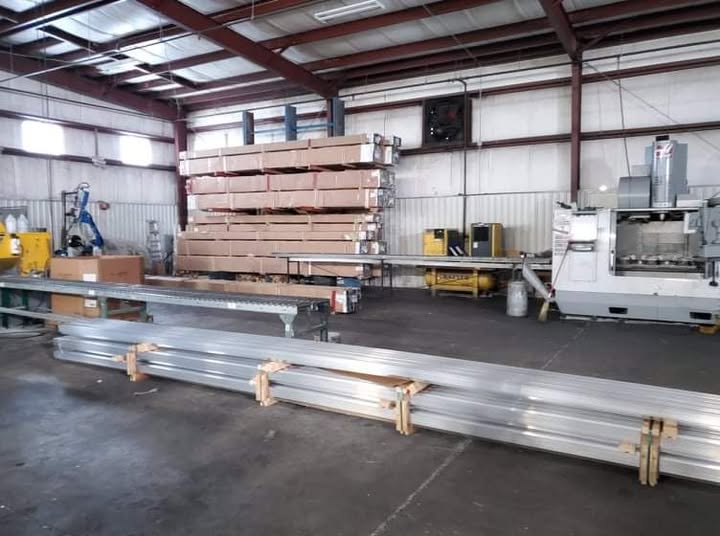Exploring Machined Parts in Florida Manufacturing: Benefits of Extrusion Machining
Florida’s manufacturing sector thrives on precision, speed, and innovation. If you’re sourcing machined parts for industrial, aerospace, or consumer goods projects, understanding processes like extrusion machining can help you optimize costs, timelines, and quality. Let’s explore how Extrusion is a manufacturing process that transforms raw extrusions into high-performance components while precisely cutting and shaping extruded materials.
What Are Machined Parts?
Machined parts are components produced through machining—a subtractive manufacturing method where material is removed from a workpiece to achieve specific geometries. These parts are critical in industries like automotive, aerospace, and electronics, where tight tolerances and durability are non-negotiable.
Understanding Extrusion Machining
Extrusion is a manufacturing process that forces material (like aluminum, steel, or plastic) through a die to create continuous profiles. These raw extrusions are then refined using specialized equipment like extrusion machining centers to meet exact design specifications.
An extrusion machining center is a machine used to precisely cut and shape the extrusion to a finished part. This process ensures components meet dimensional accuracy, surface finish, and functional requirements.
Key Benefits of Extrusion Machining in Florida
1. Precision for Complex Designs
Extrusion machining centers use advanced CNC (Computer Numerical Control) technology to precisely cutting and shaping extruded materials. This allows manufacturers to produce intricate geometries, slots, holes, and threads with micron-level accuracy.
2. Cost-Effective Production
By starting with raw extrusions, manufacturers minimize material waste. The extrusion process itself is efficient for creating uniform profiles, while secondary machining optimizes each part’s functionality.
3. Speed and Scalability
Extrusion is ideal for high-volume production. Once the die is created, generating raw extrusions is rapid. Paired with automated machining, this ensures quick turnaround times even for large orders.
4. Material Versatility
From lightweight aluminum for aerospace to durable stainless steel for medical devices, extrusion works with diverse materials. Machining further enhances properties like strength and corrosion resistance.
5. Consistent Quality
CNC-driven extrusion machining centers deliver repeatable results. Every batch meets the same standards, reducing defects and ensuring reliability.
6. Design Flexibility
Adjustments to extrusion dies or machining programs can be made swiftly, accommodating design changes without costly delays.
7. Reduced Secondary Operations
Since extrusion creates near-net shapes, less machining is needed compared to traditional methods, saving time and costs.
How Extrusion Machining Centers Work
- Extrusion Creation: Material is heated and forced through a die to form raw extrusions.
- CNC Machining: The extrusion is loaded into a machining center, where drills, mills, and lathes precisely cutting and shaping extruded materials into finished parts.
- Quality Inspection: Parts are measured against CAD models to ensure compliance.
Why Florida Manufacturers Choose Extrusion Machining
- Local Expertise: Florida’s aerospace and marine industries demand high-performance parts.
- Faster Turnarounds: Proximity to suppliers reduces logistics delays.
- Sustainability: Efficient material use aligns with eco-friendly goals.
FAQs: Machined Parts & Extrusion
Q: What industries use extrusion-machined parts in Florida?
A: Aerospace, automotive, construction, and marine sectors rely on these parts for structural and mechanical applications.
Q: How does extrusion differ from other machining processes?
A: Extrusion shapes materials by forcing them through a die, while machining removes material. Combined, they optimize speed and precision.
Q: Can extrusion machining handle custom designs?
A: Yes. Dies and CNC programs are tailored to create unique machined parts for specialized needs.
Q: Are raw extrusions reusable?
A: Excess material can often be recycled, reducing waste and costs.
Q: What materials work best for extrusion machining?
A: Aluminum, steel, brass, and thermoplastics are popular for their machinability and strength.
Conclusion
For Florida manufacturers, combining extrusion and machining unlocks a competitive edge. Whether you need raw extrusions transformed into lightweight aerospace components or durable automotive parts, this process ensures precision, scalability, and cost savings. By precisely cutting and shaping extruded materials, businesses achieve faster production cycles and higher-quality outcomes.
Ready to streamline your project? Connect with our team to explore how machined parts are components produced through machining can elevate your next design.



